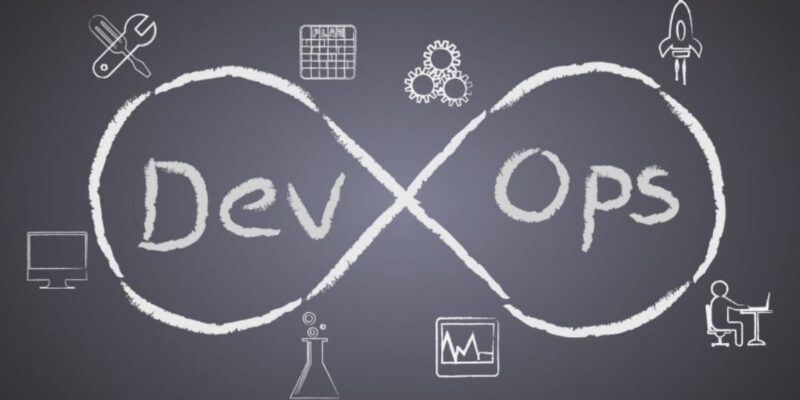The goal of every DevOps team is to do more with less. Often enough, however, the technology used or the respective corporate culture stands in the way – often, it is even a combination of both factors.
However, with careful planning and consistent breaking of deadlocked thought patterns, it is possible to increase the cost-efficiency of DevOps strategies – regardless of where an organization is in its innovation journey. Some practical tips can help to find a suitable course of action:
Streamline processes
Developers love the cloud: They can launch new instances, quickly access unlimited storage capacities and work efficiently – all without expensive investments and on-site facilities. However, this ease of use comes at a price: teams need to be vigilant and constantly keep track of their cloud usage, sprawling instances, and possible cost overruns. Businesses can reduce their expenses by monitoring all their cloud activities well. In particular, this includes the regular costs for SaaS accounts, which are set up in a matter of seconds but may later not be used at all or are not compared with the development budgets.
The author of this post, Michael Friedrich, is a Developer Evangelist at GitLab and has more than 15 years of ops and infrastructure management experience. He completed his hardware/software systems engineering studies at the Hagenberg University of Applied Sciences in Austria. Initially, he worked on various IT and development projects at the University of Vienna, including ACO.net, the Austrian research, and education platform.
In addition, Michael Friedrich played a crucial role in developing the Icinga project for many years, an open-source application for system and network monitoring. After working for the Nuremberg IT service provider Netways, he took on the Developer Evangelist role at GitLab in 2020. He is dedicated to CI/CD, monitoring/observability, and security. He is also involved in open source development and appears as a speaker at events and meetups (Image: GitLab).
The automation of core processes can also be helpful here: For example, companies can set up a self-scaling CI/CD cluster so that it runs tests every time the team releases new code or realizes implementations. With the right tools, this work can be spread across multiple servers, increasing or decreasing capacity as needed to keep costs down. With this approach, companies can save up to 90 percent in costs while at the same time ensuring the desired code quality.
Less is often more
The vast range of available DevOps tools gives development teams too many choices. Because it is precisely this multitude of options that can lay the foundation for project budget overruns, the team must consider the initial investment costs and ensure that these tools are ongoing later on be maintained and updated. Highly specialized tools may require hiring highly specialized developers, increasing the price.
The best argument for “less is more” optimization is usually a toolchain implemented by the DevOps team as a single end-to-end toolchain. With it, companies can accelerate their core release cycle from once every one to two weeks to once every few minutes.
Rethink legacy systems and your own corporate culture
While some organizations benefit from being able to redesign their DevOps strategy from scratch, most teams need to streamline the workflow of their existing toolchains and tests. However, such a sensible approach to remodeling often comes with risks and additional costs.
As such, they are moving from legacy systems to a leaner DevOps approach is time-consuming and can also undermine the overall goal of accelerating valuable software updates. Because legacy systems often hinder modernization efforts due to their sheer size: With millions of lines of code, it can be challenging to break away from costly manual tests. Therefore, it is advisable in these cases to put the technology and corporate culture to the test.
Organizations that embrace this challenge, make new technology choices, and encourage their development and test teams to adopt new workflows stand to gain. One possible approach is to shift development from monoliths to microservices and thus move to a container-based architecture. The key to such a strategic migration is building the underlying architecture on top of containers using Kubernetes, Docker, and platforms like OpenShift, AWS, and Google Cloud. In addition to an innovative architecture structure, it is also advisable to use a consistent platform for the configuration, development, testing, implementation, and management of the various microservices.
Courage to change
Automation is one area of DevOps where the cost of not doing it is likely to outweigh the cost of actually implementing it is a realization every team member involved in test automation will come to sooner or later. According to them, a recent DevSecOps survey finds that developers, security professionals, and operations teams agree that software testing is the number one obstacle to an organization’s innovation programs.
Automating multiple testing processes is a practical approach to addressing these limitations. The experiences of the non-profit programming group Free Code Camp, for example, offer valuable insights into how a previously outlined strategy works. The user community has turned to automation to avoid manual, repetitive work, speed up processes, and control test procedures more effectively.
To do this, she has developed a CI pipeline for better error detection. Initial investments in time and resources will pay off in the long run and usually yield excellent results.
Conclusion
It’s entirely possible to accelerate DevOps results while keeping costs down. Suppose it is possible to bring together precise strategic planning, creativity, and a reality-oriented change in corporate culture through qualified teams and actual work. In that case, this can lead to success in every company.





















Comments